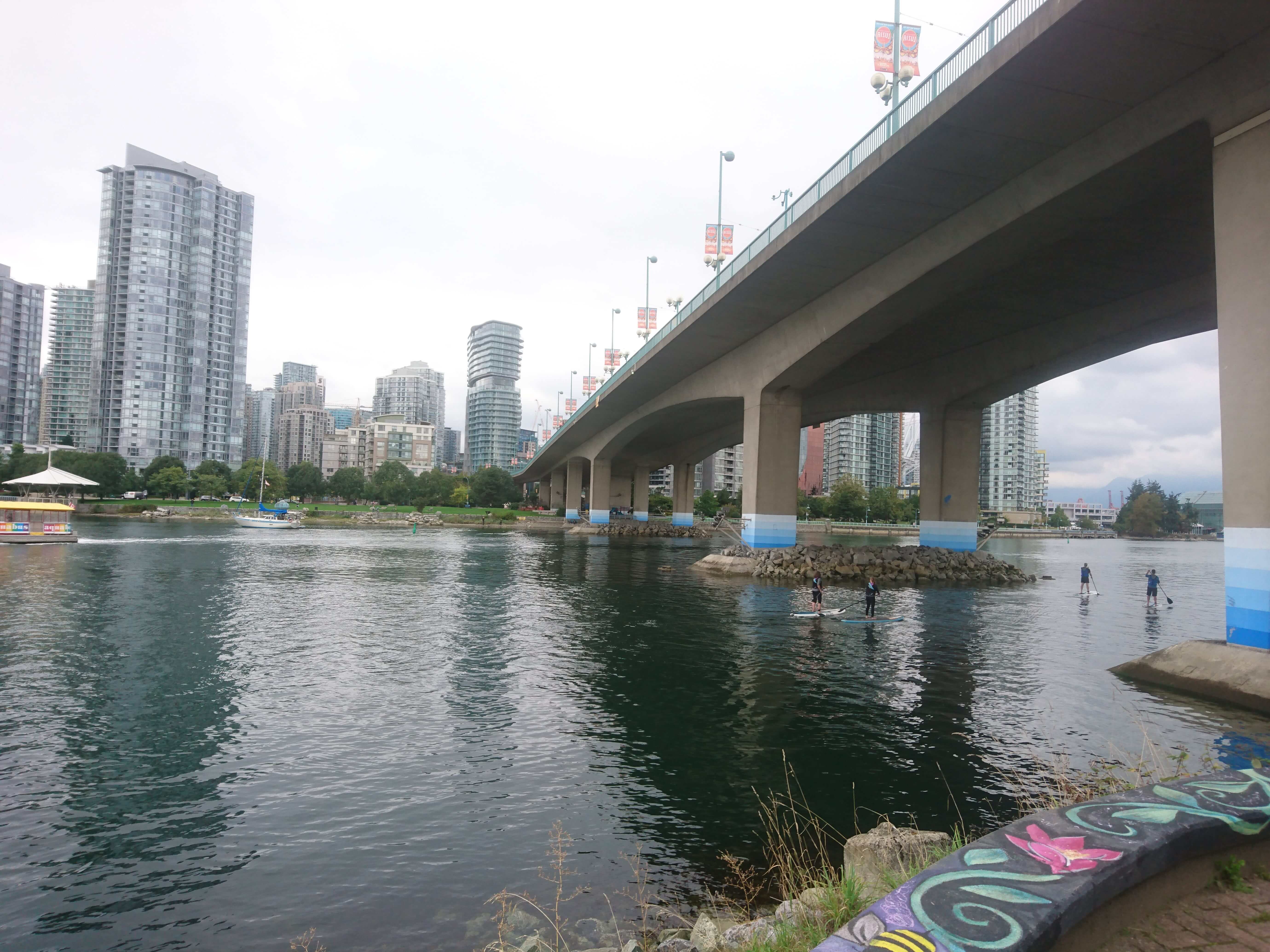Many bridges in Vancouver were not up to modern seismic standards.
Vancouver is known for seismic activity and infrastructure in the Vancouver-area is built with great care to protect users when an earthquake hits. Structures built in Vancouver before the 2015 National Building code changes may require seismic retrofitting or renewals to perform better in the event of a seismic event. Thurber has been involved in numerous seismic renewal projects on bridges in Vancouver.
Our bridge retrofit experience includes:
Cambie Street Bridge
Cambie Street Bridge is an existing multi-span bridge crossing False Creek. Built in 1985, the bridge was built before the introduction of more stringent and comprehensive earthquake requirements. The City of Vacouver wanted to retrofit and rehabilitate the bridge to ensure public safety.
As the geotechnical consultant to Associated Engineering, Thurber provided site investigation, lab testing, geotechnical characterization of existing foundation conditions, seismic site response analyses, liquefaction assessment, and foundation response/deformation assessment to provide input for structural checking. We developed ground improvement concepts to address seismic kinematic demands.
Rehabilitation work for the bridge remains ongoing.
Highway 99 Nicomekl River Bridge Seismic Renewal
Built in 1961, the Nicomekl River Bridges carry Highway 99 over the Nicomekl River in Surrey, BC. The bridges were identified as seismically vulnerable and needed a seismic retrofit.
Thurber completed a geotechnical assessment including detailed analyses required to address structural and geotechnical issues during the retrofit. Analyses included seismic assessment with non-linear site-specific response analyses, liquefaction assessment, lateral ground deformation analysis, assessment of the existing bridge foundations, design of ground improvement options, and foundation retrofit using approach spans supported on drilled shafts.
We carried out a supplementary site investigation for the foundation design of the drilled shafts.
Geotechnical challenges included:
- soft, compressible soils and liquefaction-susceptible soils
- lateral spreading and significant kinematic loading at the abutments
- complex pile group arrangements
- limited access for foundation retrofits
Nelson and Cypress Creek Bridges
The Cypress and Nelson Creek Bridges were built circa 1970. They carry the Trans Canada Highway #1 over two major valleys in West Vancouver. The bridges are classified by the Ministry of Transportation and Infrastructure BC as “Disaster Response Route” (DRR) bridges. For DRR bridges, significant damage is acceptable, provided that limited use by emergency traffic is possible following an earthquake. The acceptable damage level is “Significant Damage (No Collapse)” Both bridges are located in a highly seismicity zone with a 0.234 g Peak Ground Acceleration.
Thurber was the geotechnical sub-consultant for the retrofit. We completed a geotechnical assessment including site investigation and detailed analyses required for the retrofit to address structural and geotechnical issues. Thurber’s scope included analyzing slope stability, post-seismic permanent displacements, soil anchor design, retaining wall stability, lateral resistance of abutments, and providing solutions for foundation retrofit using shear pin piles.


